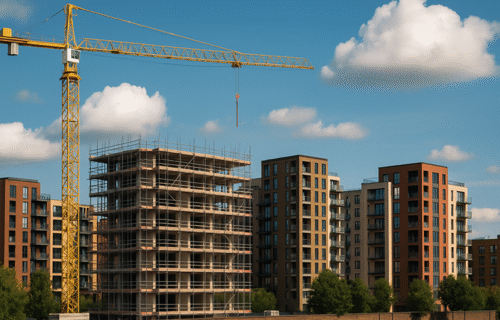The UK Government and the Mayor of London have unveiled a coordinated plan aimed at breaking the gridlock in the capital’s housing market. Announced on 23 October 2025, the Homes for London initiative sets out a series of short-term measures to help unstick stalled residential schemes and encourage new construction. The joint package combines targeted financial incentives, adjustments to design and planning rules, and public investment to improve project viability across the city.
At the heart of the plan is a 50 percent cut in borough-level Community Infrastructure Levy charges for qualifying brownfield developments that commit to at least 20 percent affordable housing. The relief, which excludes student and co-living schemes, is designed to reduce the financial strain that has been preventing many projects from moving forward. It will apply only to developments that start construction after the rules take effect and before the end of 2028, giving developers a defined window to benefit from the measure.
In parallel, several planning and design standards will be revised to make higher-density housing more achievable. City Hall and the Department for Levelling Up have agreed to ease certain guidelines that have constrained development layouts, such as the requirement for all homes to have dual aspects and limits on the number of dwellings accessed from a single core. Cycle parking obligations will also be relaxed to reflect the growth of shared and dockless transport options. The intention is to maintain reasonable living standards while allowing greater design flexibility and cost efficiency.
The Government and City Hall are also introducing a temporary planning route to sit alongside the existing fast-track system. Under this new route, developers delivering at least one-fifth affordable homes will be able to proceed without providing a full viability assessment. The measure is intended to streamline the planning process and reduce delays caused by lengthy negotiations over financial contributions. It will remain in place until March 2028 or until a new version of the London Plan is adopted, whichever comes first.
Further provisions expand the Mayor’s authority over significant developments. Local councils will be required to refer housing proposals of 50 or more homes to the Mayor if they are minded to reject them, rather than waiting until the 150-unit threshold currently in force. The Mayor will also gain the power to take over decisions on large developments of more than 1,000 square metres situated on Green Belt or Metropolitan Open Land. In some cases, decisions may be made based on written representations rather than full hearings, a step expected to reduce decision times by several months.
A new City Hall Developer Investment Fund will provide financial support to accelerate housing delivery on key sites. The fund, initially backed by £322 million for 2026 and 2027, will work alongside the existing London Land Fund to unlock developments that face funding or infrastructure barriers. The Government and City Hall have also indicated that they will collaborate on potential new town projects within London’s boundaries and expand access to low-cost financing for social landlords through the National Housing Bank.
A formal consultation period on the proposed measures will begin in November and last for six weeks. Some reforms can be implemented through secondary legislation, while others, including changes to planning procedures, will require parliamentary approval. If adopted, the Homes for London package would represent one of the most significant interventions in the capital’s housing system in over a decade, reflecting growing concern about the shortage of new homes and the increasing cost of delivery.
By combining temporary financial relief, streamlined planning routes, and direct public investment, the initiative aims to reignite construction activity and bring forward a new wave of housing across the city before the end of the decade.
Source: CMS
